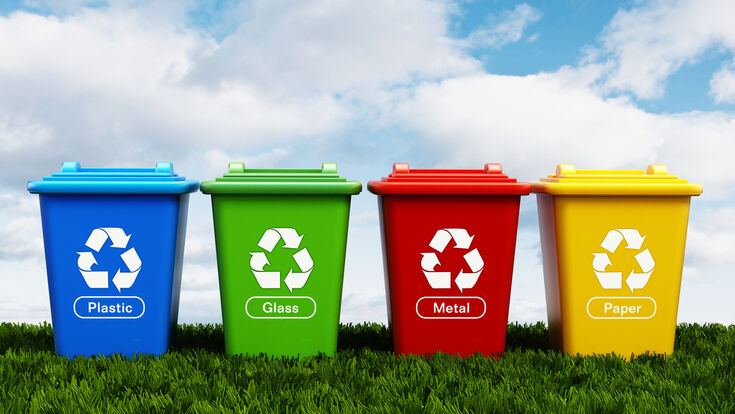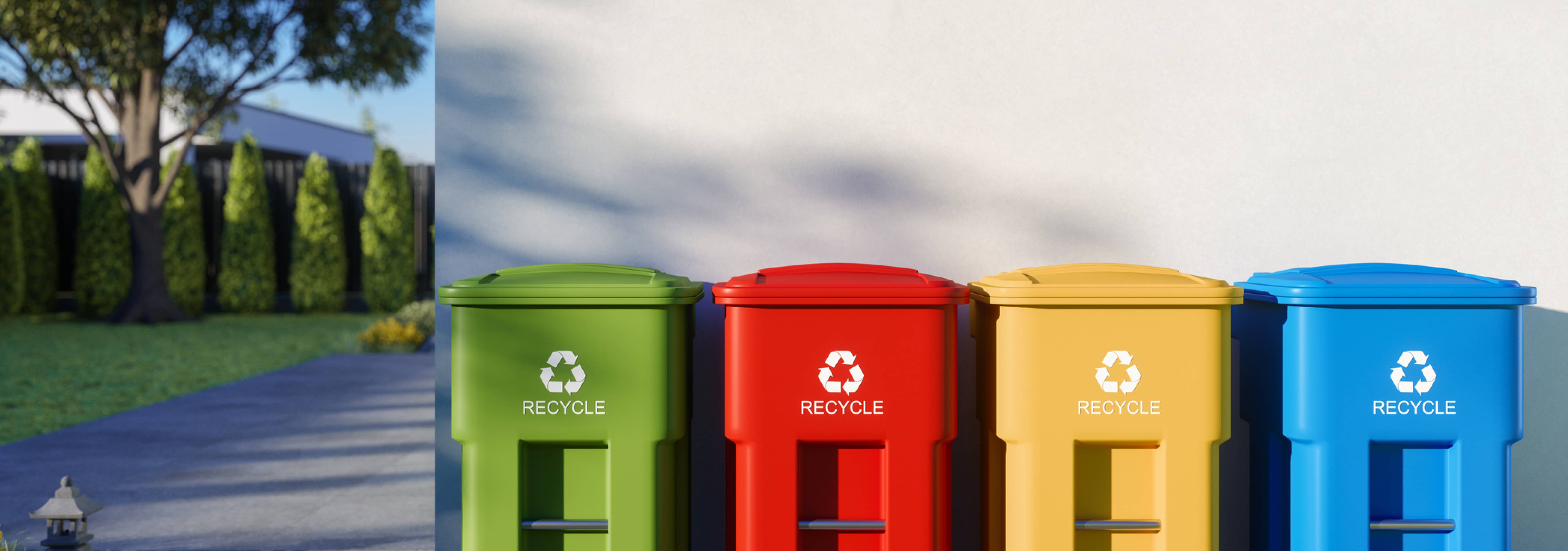Exploring Various Sorts Of Waste in Modern Waste Administration Solution
The contemporary landscape of waste administration entails navigating a complicated variety of waste kinds, each requiring specialized handling and disposal methods to alleviate ecological impacts. Metropolitan solid waste, contaminated materials, electronic waste, and natural waste each existing distinctive challenges and possibilities for source healing. Innovative remedies such as clever waste containers and waste-to-energy modern technologies are becoming important devices in improving efficiency and sustainability. Recognizing these waste kinds is crucial for promoting public understanding and motivating energetic engagement in sustainable techniques. What methods can successfully resolve these varied kinds of waste while promoting a round economic situation?
Community Solid Waste
Local solid waste, frequently referred to as house trash or waste, incorporates a range of discarded products generated by residential, business, and institutional resources within a district. This waste stream generally includes items such as product packaging, food scraps, backyard trimmings, paper, plastics, fabrics, and discarded family goods. The monitoring of municipal solid waste is an important component of urban preparation and public wellness, demanding reliable collection, transport, and disposal systems.
Efficient waste administration systems are made to decrease ecological effect while taking full advantage of source healing. Composting organic waste, such as food scraps and lawn trimmings, not just reduces land fill usage but likewise creates useful dirt modifications.
Towns need to also deal with the economic and logistical challenges connected with waste management. Executing pay-as-you-throw systems, improving public recognition, and purchasing technology can significantly enhance waste diversion rates. By integrating these practices, municipalities can promote sustainable areas, lower greenhouse gas discharges, and save natural deposits.
Contaminated Materials

Effective contaminated materials administration includes numerous crucial actions: recognition, disposal, therapy, and segregation. Recognition requires the classification of waste based upon its dangerous buildings. Segregation guarantees that harmful products are kept independently from non-hazardous waste to stop cross-contamination. Treatment techniques, such as chemical neutralization, incineration, and stabilization, are used to reduce the toxicity, volume, or flexibility of the waste. Disposal choices, consisting of secure landfills and underground storage, are selected to make sure long-lasting control.
Regulative frameworks, such as the Source Conservation and Recuperation Act (RCRA) in the USA, offer standards and standards for harmful waste monitoring. Adherence to these policies, combined with advancements in waste treatment innovations, is crucial in minimizing the dangers connected with dangerous waste.
Electronic Waste
Digital waste, generally referred to as e-waste, represents a swiftly growing challenge in waste monitoring systems internationally. This sort of waste incorporates disposed of digital gadgets and tools such as mobile phones, computers, televisions, and various other electronic home appliances. The fast speed of technological improvement, combined with lowering item life-spans and customer need for the current devices, has actually greatly raised the volume of e-waste generated each year.
E-waste is particularly problematic as a result of its complicated composition, commonly including hazardous compounds like mercury, cadmium, and lead, which position substantial ecological and wellness dangers if not effectively taken care of. Alternatively, e-waste also has valuable products such as copper, silver, and gold, which can be recouped and recycled. The dual nature of e-waste-- both unsafe and valuable-- requires customized handling, recycling, and disposal procedures.
Efficient e-waste management entails stringent governing structures, robust collection systems, and advanced reusing modern technologies. Public understanding and involvement are vital, as improper disposal methods, such as illegal dumping and casual recycling, intensify ecological contamination and health and wellness threats. Consequently, enhancing e-waste administration methods is important for alleviating environmental impact and recovering important resources in a progressively digital world.

Organic Waste
Organic waste, making up kitchen scraps, yard trimmings, and farming residues, stands for a substantial section of the worldwide waste stream. This type of waste is biodegradable, meaning it can be damaged down by microbes right into simpler natural substances. Regardless of its capacity for all-natural disintegration, inappropriate monitoring of natural waste can bring about negative environmental effects, consisting of the exhaust of greenhouse gases such as methane, which add to environment adjustment.
Reliable monitoring of natural waste is essential for reducing these environmental effects (recycling lives services). Composting is an extensively embraced technique, changing organic waste into nutrient-rich garden compost that can improve dirt health and agricultural efficiency. In addition, anaerobic food digestion is an emerging modern technology that transforms organic waste right into biogas, a renewable energy source, and digestate, a knockout post which can be used as fertilizer
Municipalities and waste monitoring entities must carry out durable organic waste collection and treatment programs to make best use of the advantages of these processes. Public education and learning projects can likewise play a pivotal function in encouraging households and businesses to separate natural waste from other sorts of waste. By prioritizing the monitoring of organic waste, cultures can decrease garbage dump use, lower greenhouse gas exhausts, and create important byproducts for agricultural use.

Cutting-edge Waste Management
In the realm of waste administration, ingenious approaches are browse around these guys transforming how cultures manage their refuse, going for sustainability and performance. These innovations include a series of technologies and practices that improve reusing prices, minimize land fill reliance, and reduced ecological effect. One noticeable technology is the application of clever waste containers equipped with sensing units that keep track of fill levels and maximize collection courses. This not only reduces gas consumption but likewise lessens greenhouse gas emissions.
Another noteworthy growth is the fostering of waste-to-energy (WtE) innovations. By transforming non-recyclable waste into useful energy with processes such as incineration and anaerobic food digestion, WtE lowers landfill concern and supplies a sustainable power source. Improvements in chemical recycling permit for the breakdown of intricate plastics into their original monomers, making it possible for the creation of new, top notch plastic items.
Moreover, the round economic climate design is acquiring traction, highlighting the style of products and systems that focus on reusability and source performance. This all natural approach motivates sectors to decrease waste generation from the start. Through these cutting-edge techniques, modern waste administration systems are not only attending to the instant challenges of garbage disposal however additionally leading the way for an extra lasting future.
Verdict
An extensive understanding of metropolitan strong waste, unsafe waste, electronic waste, and natural waste, coupled with the implementation of ingenious waste management services, is crucial for minimizing environmental influences. Integrating technologies such as smart waste containers and waste-to-energy systems can improve performance and sustainability. Efficient waste management strategies not only foster source recovery yet additionally promote public recognition and involvement, eventually contributing to the growth of a circular economy.
The contemporary landscape of waste administration entails navigating a complex range of waste kinds, each needing specialized handling and disposal methods to reduce environmental impacts. Community solid waste, hazardous waste, digital waste, and natural waste each existing unique challenges and opportunities for source recovery.Electronic waste, commonly referred to as e-waste, represents a quickly growing obstacle in waste administration systems worldwide. Via these innovative approaches, modern-day waste management systems are not look at this now only dealing with the instant challenges of waste disposal yet also paving the way for a much more sustainable future.
A comprehensive understanding of municipal strong waste, hazardous waste, electronic waste, and natural waste, paired with the application of innovative waste monitoring remedies, is important for minimizing ecological influences. (recycling lives services)
Comments on “Just How Recycling Lives Services Help In Reducing Ecological Impacts”